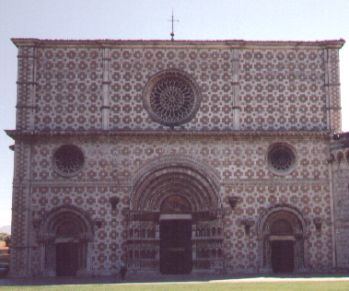|
|
Storia dell'arte - Story of Art
|
|
|
CINQUECENTO
By the end of 1400, the ethic and esthetic values of the Renaissance became weak. Florence, the city where this cultural style started, lost its importance, with the exception of Michelangelo and Leonardo, who started their artistic career in the city. Rome became the new artistic epicentre, especially after the return of the Popes from Avignon. This period had a great effect on Rome, which was ornamented with new structures, and rebuilt by the Popes. Some important artists like Michelangelo, Raffaello and Bramante brought the new ideas of Classicism. The works of Raffaello and Bramante fully expressed the confidence in the classic period. This century was, actually full of dramatic events, from the Protestant Reform, to the Catholic Counter-Reformation and the loss of political stability. All these events caused a desire of changes even in the artistic field. The art was not science anymore, but a new dramatic research of the reasons of the human actions. The political and Social Changes constantly influenced the works of many italian artists. Leonardo made a separation between art and science, Michelangelo worked on the relationship between the sacred and the Human Nature (The Last Judjement - Cappella Sistina). Leonardo went beyond the traditional Rule of Perspective and this represented his most prolific period as artist and as intellectual. At the same time, Michelangelo created a new concept of Space, which became larger than the usual human limits. (Cappella Sistina, Bibliteca Laurenziana, Progetto per la Cupola di San Pietro). The artistic education of Raffaello Sanzio was a lot different respect the other artists. He started in Urbino and his first works still reflected the classic style of 1400 (Sogno del Cavaliere, Le Tre Grazie, Madonna del Granduca). Even Venice reflected at this time the common sense of uneasiness. A new Relationship between the Human Being and the Nature emerged, as represented in some works of Veronese and Giorgione. Tiziano learnt a lot from Giorgione’s Paintings and created his own personal style based on the importance of colors (Le due Veneri Giacenti, Ritratto di Carlo V). He had a very important role in the artistic background of Venice. A lot of important painters like Tintoretto and Bassano sought inspiration from Tiziano’s works. Tintoretto, like Michelangelo refused the usual concept of geometric and immutable space. By this tim, the High Renaissance Painting evolved into Mannerism. The main artists of this new expression of art were: Pontormo and Rosso Fiorentino. Pontormo (Deposizione di Santa Felicita) worked on the classic forms and simmetries; Rosso Fiorentino focused his attention on colors, especially violent colors. Rosso Fiorentino after his stay in France, learnt a lot about the french style, for this reason, he’s considered the “liason” between the Italian culture and The Fountainbleu Mannerism. Giorgio Vasari, who worked in Florence created the theoric principles of a New Classicism, using Michelangelo’s works as a symbol of perfection. The artistic environment in Rome was very influenced by Vasari’s sense of Mannerism. In Emilia, after Correggio (affreschi si San Giovanni) another great exponent of the Mannerism was Parmigianino (Madonna dal Collo Lungo). The italian artistic environment in this period is really hard to synthetize in one single style or artist. First Brunelleschi, Alberti , Bramante and then Palladio showed in their architectural works the most important and beautiful expression of the Neoclassic Art. In this century Italy started to extend its influence all across Europe. A lot of cities in the Netherlands were rebuilt following the rules of Classicism The painting increased its imprtance with two great artists: Pieter Bruegel and Jeronimus Bosch. These two paiters added to the classic style, the use of small details and the grotesque deformation. In Germany the most important representatives of this artistic period were: Durer, Lukas Cranash, Mathias Grunewald, Haus Holbein. The Spanish Art in the second half of the century reached a great level of importance and prestige. Domenico Theotocopulos (El Greco) was one of the biggest representatives of the Spanish Art and after his stay in Venice he learned Michelangelo’s innovative concept of space. In China, the Ming Empire gave a lot of prominence to the Artistic development, especially the ceramics manufacture. About the painting, the artistic school “Wu” introduced the use of new colors like pale yellow and blue. In Central America dates back to 1500 the last works of the Azteca art.
|
|
|
